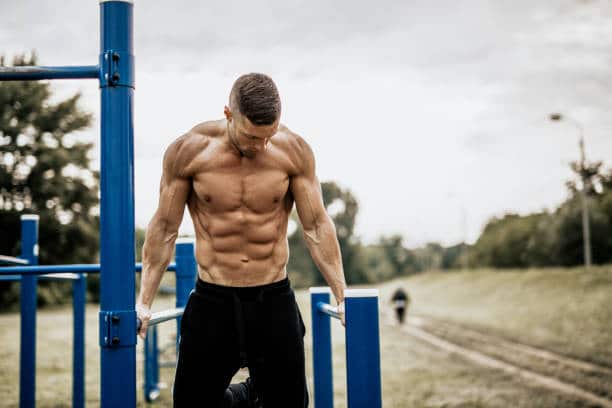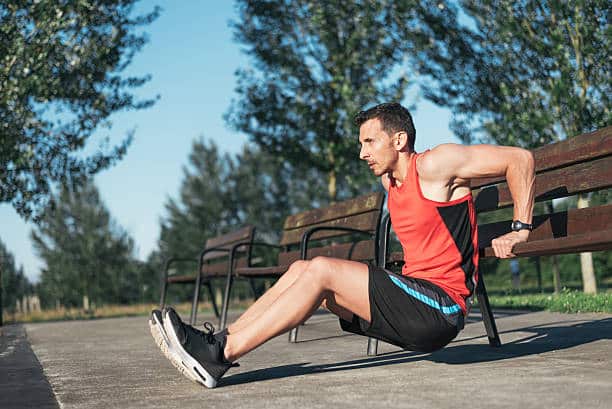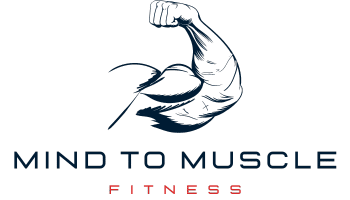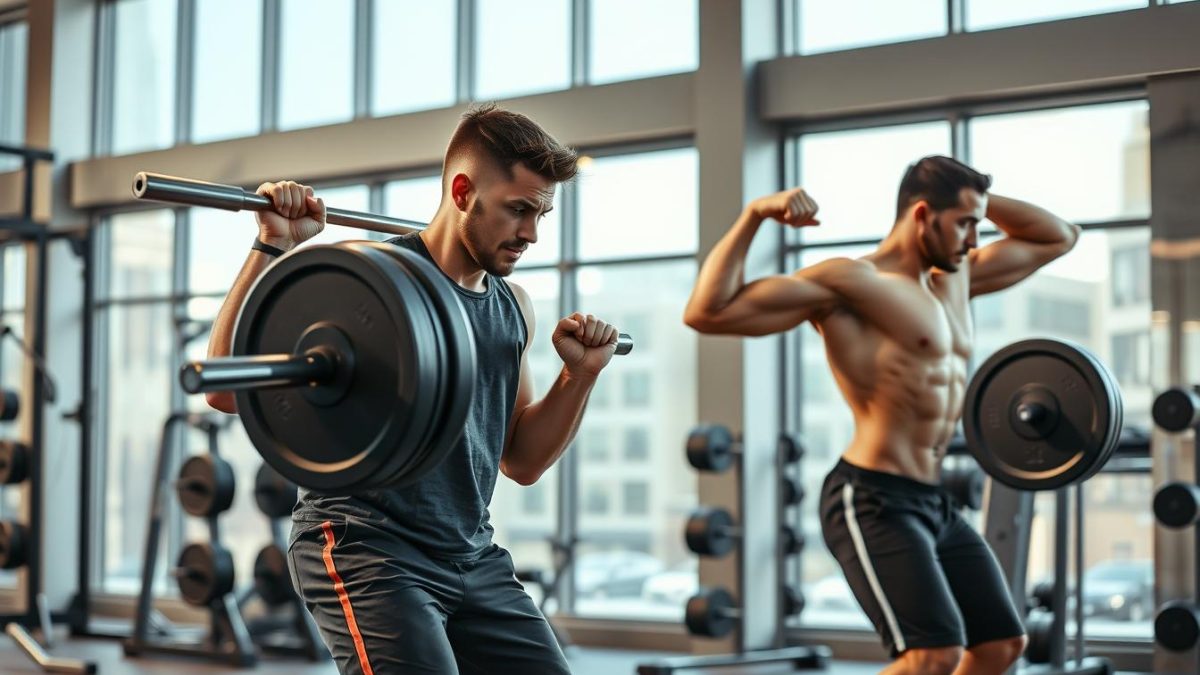
Dips Workout Muscles Targeted: My Fitness Guide
Did you know that a dips workout muscles targeted can engage up to 70% of your upper body muscles all at once? This powerful exercise is more than just a simple move—it’s a full upper-body workout in itself.
When you perform tricep dips, you’re not only focusing on your triceps but also giving your chest, shoulders, and overall upper body strength a significant boost.
In this guide, we’ll explore the amazing benefits of chest dips and explain why adding dips to your strength training and bodyweight routines can dramatically enhance your upper body conditioning.
Introduction to Dips Workouts

When it comes to upper body exercises, dips are a standout choice. They’ve earned their place in calisthenics routines for a good reason. As a cornerstone of fitness basics, dips help you build both strength and muscle definition.
The technique for performing dips is simple, yet it delivers a robust workout that engages multiple muscle groups. Since their emergence in the early 20th century, dips have become a staple in workout routines due to their effectiveness and ease.
This introduction is designed to motivate you to add dips to your fitness routine. Whether you’re a beginner or an experienced athlete, there’s a dips variation that fits your skill level. Mastering this exercise can significantly enhance your upper body strength.
What Muscles Does Dips Workout?
When you perform dips, you activate several key muscle groups. This compound exercise is superb for overall muscle engagement, effectively targeting both primary and secondary muscles.
Primary Muscles Engaged
During dips, the primary muscles targeted are the pectoralis major, anterior deltoids, and triceps brachii. The pectoralis major, your chest muscle, carries a significant load, enhancing your upper body definition. The anterior deltoids, located at the front of your shoulders, help with lifting and controlling the movement. Finally, the triceps brachii, situated at the back of your upper arms, work intensely to strengthen and define your arms.
Secondary Muscles Involved
In addition to the primary muscles, dips engage several secondary muscles that assist with stability and support. The rhomboids and levator scapulae in your upper back are activated to help maintain proper form and alignment. Your core stability muscles, including the abs and obliques, also play a crucial role in providing balance and support throughout the movement. This comprehensive muscle engagement makes dips a highly effective exercise for enhancing upper body strength and stability.
| Muscle Groups | Primary Muscles Engaged | Secondary Muscles Involved |
|---|---|---|
| Chest | Pectoralis Major | Rhomboids |
| Shoulders | Anterior Deltoids | Levator Scapulae |
| Arms | Triceps Brachii | Core Stability Muscles |
How to Perform Dips Correctly

Executing dips with proper form is essential for maximizing benefits and ensuring workout safety. Following exercise instructions precisely helps you avoid common mistakes and achieve effective training results.
Step-by-Step Guide
- Start by gripping the bars firmly and lifting yourself until your arms are straight.
- Keep your body upright and your legs straight or crossed behind you.
- Lower your body by bending your elbows until your shoulders are below your elbows.
- Push yourself back up to the starting position by straightening your arms.
- Repeat for the desired number of repetitions.
Common Mistakes to Avoid
A safe and well-formed workout is a prerequisite for efficient training. Here are a few typical errors to steer clear of:
- Improper Elbow Alignment: Keep your elbows close to your body to avoid shoulder strain.
- Neglecting Full Range of Motion: Lower yourself until your shoulders are below your elbows for maximum engagement.
- Arching Your Back: Maintain a straight line from head to toe to prevent lower back injury.
Dips are an exercise that may be done safely and correctly if you follow these fitness guidelines and recommendations. This will enable you to work out effectively, gain strength, and stay clear of typical traps that could impede your advancement.
Types of Dips and Their Variations
Understanding various dips can make your exercise regimen more interesting and productive. Using these variants broadens the scope of your resistance training by focusing on a variety of muscle groups. I’ve listed two common dip variations below that you may incorporate into your at-home and gym exercises.
Parallel Bar Dips
Parallel bar dips primarily target your chest and triceps, making them an excellent choice for building upper body strength. To perform this exercise, you’ll need access to parallel bars, which are commonly found in most gyms.
- Grasp the bars firmly with both hands.
- Start in a suspended position and lower your body slowly.
- Go down until your arms form a 90-degree angle.
- Push yourself back up to the starting position.
Integrating parallel bar dips into your routine not only enhances chest dips but also greatly boosts your overall upper-body resistance training. Although they can be challenging, they’re exceptional for muscle growth.
Bench Dips
Bench dips are an excellent alternative for at-home workouts. They primarily target your triceps and offer various modifications to adjust the intensity. Best of all, bench dips require no specialized equipment—just a sturdy bench or chair will suffice.
- Sit on the edge of the bench and place your hands next to your hips.
- Slide off the bench, supporting your body with your arms.
- Lower your body until your elbows form a 90-degree angle.
- Push yourself back up using your triceps.
For a more difficult variation, you might stretch your legs throughout this exercise. Bench dips are a flexible exercise that works your triceps well and goes well with weight training.
| Type of Dip | Equipment Needed | Primary Muscles Worked | Adjustable Difficulty |
|---|---|---|---|
| Parallel Bar Dips | Parallel Bars | Chest, Triceps | Yes |
| Bench Dips | Bench or Chair | Triceps | Yes |
I can assure you of a well-rounded at-home workout if you incorporate these types of tricep dips and chest dips into your routinThere’se’s always a dip variation that works well for you, regardless of your level of experience.
Benefits of Dips Workouts
Incorporating dips into your workout routine offers numerous benefits. These exercises promote significant strength gains by engaging multiple muscle groups simultaneously. They effectively target the chest, triceps, and shoulders while also contributing to overall endurance, making them an excellent choice for enhancing your fitness level.
Dips are particularly effective for muscle toning, helping to sculpt a well-defined upper body by focusing on key muscles. The compound movement involved improves muscle coordination and development.
In functional fitness, dips are unmatched. They enhance your ability to perform everyday activities by improving joint stability and balance. Additionally, regular dips practice boosts athletic performance, making them a highly rewarding addition to any training regimen.
Including Dips in Your Workout Routine
Integrating dips into your workout routine can greatly boost your strength and muscle development. Start by determining how often to perform the exercise based on your fitness level. Beginners might aim for two sessions per week, while more advanced individuals could include dips up to four times a week.
Ensure dips are part of a balanced training program to work all muscle groups evenly and prevent overuse injuries. Adhere to progressive overload principles by gradually increasing your dip repetitions or adding weight to stimulate muscle growth effectivelHere’se’s a quick guide to help with your workout planning:
- For beginners: 2 days per week with three sets of 8-10 reps.
- For intermediate: 3 days per week with 3-4 sets of 10-12 reps.
- For advanced: 4 days per week with 4 sets of 12-15 reps plus additional weight.
You can easily include dips in your exercise routine by following these suggestions. To prevent burnout, keep in mind that consistency and paying attention to your body are crucial. As you make progress and reach your goals, make necessary adjustments to your plan.
Alternatives to Dips if You Find Them Challenging

Many people find dips difficult, whether it’s because of their physical limits or fitness level. Fortunately, there are efficient substitute workouts that focus on the same muscle regions. You may develop strength without the potential strain that dips may create by including these easily accessible training options in your program.
Push-Ups
Dips are a great substitute exercise for push-ups. They go for your triceps, shoulders, and chest. Modified push-ups are an option if conventional push-ups are too challenging. While they are less intense, variations like wall push-ups and knee push-ups still work important muscle areas. By including these in your routine, you can encourage muscular growth and help prevent injuries.
Tricep Extensions
Another excellent option is overhead tricep extensions. This exercise isolates and strengthens your triceps, offering similar muscle engagement to dips. Use light to moderate weights and focus on proper form to maximize benefits and minimize strain. Overhead tricep extensions are an accessible choice for various fitness levels, helping build muscle without overexertion.
Incorporating these alternative exercises into your routine can help you achieve significant upper-body strength gains. Adjust them as needed to match your abilities, ensuring a safe and effective workout experience. In addition to focusing on upper-body strength, consider integrating exercises that target other muscle groups for a more balanced fitness regimen. For instance, paying attention to vastus lateralis workout tips can enhance your leg training and improve overall lower-body stability. By diversifying your exercises, you create a more comprehensive approach to building strength across your entire body.
FAQ
What are the major benefits of a tricep dips workout?
Tricep dips are highly effective for building upper body strength, specifically targeting the triceps, chest, and shoulder muscles. They not only enhance muscle tone but also contribute to improved endurance.
How do I perform dips correctly to avoid injuries?
To perform dips correctly, keep your elbows close to your body and lower yourself slowly while controlling your movement to prevent shoulder strain. Maintain a straight body line to engage your core stability effectively.
What are the primary muscles engaged during dips?
The primary muscles engaged during dips are the triceps, pectoralis major (chest muscles), and anterior deltoids (front shoulder muscles).
Are there any secondary muscles involved in dips workouts?
Yes, secondary muscles like the rhomboids and levator scapulae also play a role, offering additional stability and support during the exercise.
Can beginners safely include dips in their workout routine?
Absolutely! Beginners can start with modified versions, like bench dips, to build strength before progressing to parallel bar dips. Focus on maintaining proper form to ensure workout safety.
What are the different types of dips and their variations?
There are several variations of dips, including parallel bar dips and bench dips. Each targets the muscles slightly differently, and you can adjust the difficulty by changing the angle or adding resistance.
How often should I include dips in my workout regimen?
For balanced training, incorporate dips 2-3 times per week. Allow your muscles time to recover and gradually increase the intensity based on your fitness level to prevent overtraining.
What if I find traditional dips too challenging?
You can perform alternative exercises, such as push-ups or tricep extensions, which target the same muscle groups. These alternatives are excellent for building strength and can be adjusted according to your fitness level.
What are the benefits of regularly performing dips?
Regular dips workouts lead to significant strength gains, improved muscle toning, and enhanced overall functional fitness. They boost upper body conditioning and increase muscle endurance.
What common mistakes should I avoid when doing dips?
Avoid flaring your elbows out, skipping the full range of motion, and neglecting to keep your core engaged. These mistakes can lead to improper form and increase the risk of injury.



